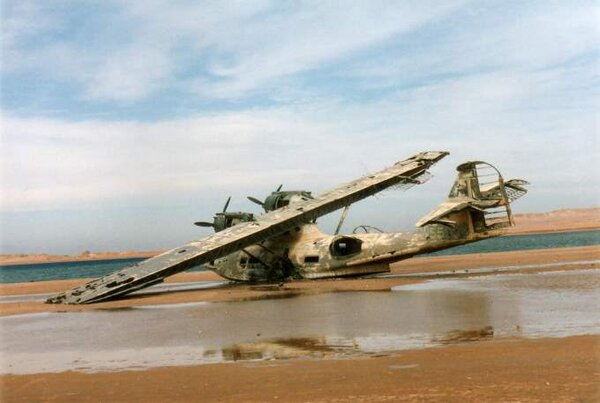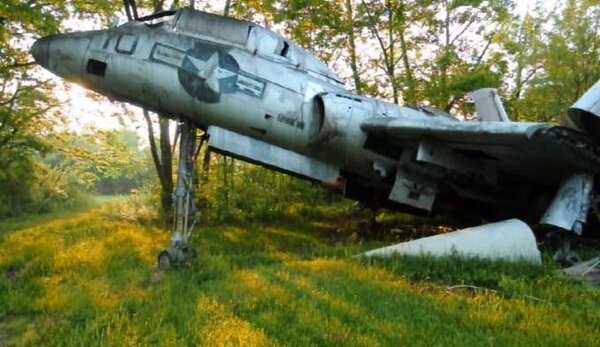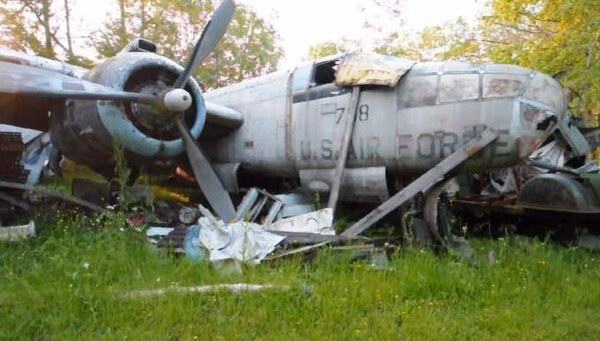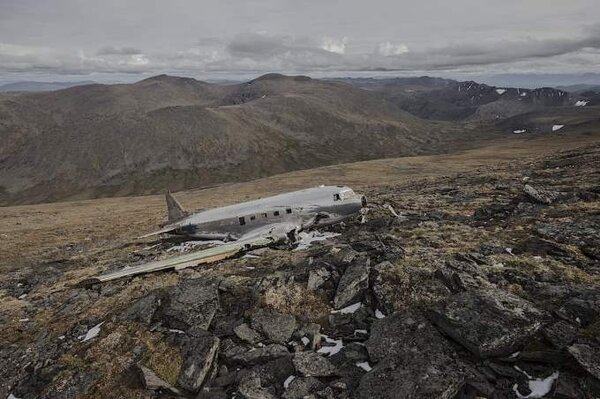-
Posts
1,412 -
Joined
-
Last visited
-
Days Won
9
Content Type
Profiles
Forums
Gallery
Downloads
Blogs
Events
Store
Aircraft
Resources
Tutorials
Articles
Classifieds
Movies
Books
Community Map
Quizzes
Videos Directory
Everything posted by pylon500
-
Had seen this link, but was trying to find another one so as not to inflict all the other crap on that site. Probably easier to just post them here, some had comments, but not a great deal to learn from, so here we go..... Searching the net, there are lots of 'abandoned' aircraft around the world, for all sorts of reasons. Seems a shame but....
-
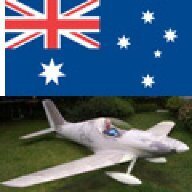
Giles-202 Inflight Break Up USA
pylon500 replied to Rotorwork's topic in Aircraft Incidents and Accidents
After more review, there appear to be parts separating on the way down, canopy? Maybe he was trying to get out... -

Giles-202 Inflight Break Up USA
pylon500 replied to Rotorwork's topic in Aircraft Incidents and Accidents
They probably all do, but timing the video, he only had about 7 seconds from breakup to impact. Take out the 'What the hell?' time, doesn't give him much left... RIP. -
That club (SRFC) started with two strokes, so you never knew if the motor was going to keep running, and the habit seemed a good idea. Flame suit on..The other club flies Jabiru's..... Maybe they should start flying closer circuits?
-
Well, looking back on my 3500+hrs in 80 odd different ultralight types over the past 25 odd years, I was very surprised how badly I flew a glider for the first time in 30 odd years. When I left gliding back then, I had near 200 hours, Silver C, and around 20 odd types (from Kooka' to Jantar), but getting into a K21, I was all over the place. What I'm getting at is that with less than 100 hours, you may just be biting off a bit much, not doubting your ability to learn multiple streams, but the variation between these disciplines can be vague and maybe contradictory. Maybe get fully compliant with one field, so that when you try another, you will see the differences and know what to, and not to, do while involved with each in turn. I hope this doesn't seem harsh, hopefully I'm wrong, and at this early stage of all your learning you can/will become multi capable, but it will take a real effort to separate and understand the differences.
-
Well, looking back on my 3500+hrs in 80 odd different ultralight types over the past 25 odd years, I was very surprised how badly I flew a glider for the first time in 30 odd years. When I left gliding back then, I had near 200 hours, Silver C, and around 20 odd types (from Kooka' to Jantar), but getting into a K21, I was all over the place. What I'm getting at is that with less than 100 hours, you may just be biting off a bit much, not doubting your ability to learn multiple streams, but the variation between these disciplines can be vague and maybe contradictory. Maybe get fully compliant with one field, so that when you try another, you will see the differences and know what to, and not to, do while involved with each in turn. I hope this doesn't seem harsh, hopefully I'm wrong, and at this early stage of all your learning you can/will become multi capable, but it will take a real effort to separate and understand the differences.
-
An often forgotten part of doing circuits, is to be within gliding distance of the strip for as much time as possible (flying ultralights that is), so when I see people on downwind two or three miles out, I'm often tempted to call. 'You've just had an engine failure, were are you going to land?' Bit silly to be looking around picking paddocks when you just took off from a serviceable runway !!? I've been in circuit in a Lightwing following Jabiru's around, and with both of us on downwind you get the impression the jabiru is leaving the circuit as they are so far away. I have called and asked 'Do you have a flightplan for that circuit?'
-
An often forgotten part of doing circuits, is to be within gliding distance of the strip for as much time as possible (flying ultralights that is), so when I see people on downwind two or three miles out, I'm often tempted to call. 'You've just had an engine failure, were are you going to land?' Bit silly to be looking around picking paddocks when you just took off from a serviceable runway !!? I've been in circuit in a Lightwing following Jabiru's around, and with both of us on downwind you get the impression the jabiru is leaving the circuit as they are so far away. I have called and asked 'Do you have a flightplan for that circuit?'
-
Not as easy as it sounds and the tendency is to do shotgun policing (no, not shooting the damn things), as in everyone gets hassled and/or regulated, often missing the culprit in the end anyway. Yep, big high energy strobes sounds like a good idea, by the time you see one of these things, it will be as the bits start raining on your windscreen.
-
Not as easy as it sounds and the tendency is to do shotgun policing (no, not shooting the damn things), as in everyone gets hassled and/or regulated, often missing the culprit in the end anyway. Yep, big high energy strobes sounds like a good idea, by the time you see one of these things, it will be as the bits start raining on your windscreen.
-
I guess if you look at it from a geometrical aspect, when doing a glide approach, you have a (reasonably) constant descent rate so from the downwind leg to touchdown needs to be a constant angle. This would dictate flying a constant curve to stay on angle, which by comparison means a square circuit requires flying outside the glide angle at the corners, while flying inside the glide angle on the legs. The proponents of circular circuits will tell you this, and point out that the aiming point is constantly changing it's angle when viewed around the square circuit. To that end, many square circuit flyers (maybe not even realising that they do it) will be using ground reference points to pick up there circuit height/position. Square circuit flyers are more likely to use power to correct falling short, while circling flyers are more likely to cram their circuit and sideslip or go 'round. If you really want students to open their eyes and see where they are, throw in a few right hand circuits! Obviously if you fly at a field that mandates left and right circuits due to restrictions, these students tend to pick up better (note I didn't say quicker) than than students that spend all their time turning left.
-
I guess if you look at it from a geometrical aspect, when doing a glide approach, you have a (reasonably) constant descent rate so from the downwind leg to touchdown needs to be a constant angle. This would dictate flying a constant curve to stay on angle, which by comparison means a square circuit requires flying outside the glide angle at the corners, while flying inside the glide angle on the legs. The proponents of circular circuits will tell you this, and point out that the aiming point is constantly changing it's angle when viewed around the square circuit. To that end, many square circuit flyers (maybe not even realising that they do it) will be using ground reference points to pick up there circuit height/position. Square circuit flyers are more likely to use power to correct falling short, while circling flyers are more likely to cram their circuit and sideslip or go 'round. If you really want students to open their eyes and see where they are, throw in a few right hand circuits! Obviously if you fly at a field that mandates left and right circuits due to restrictions, these students tend to pick up better (note I didn't say quicker) than than students that spend all their time turning left.
-
When initially learning to fly gliders, I found I could judge a circular approach better than square, although my instructors kept trying to get me to go square. Thirty years later, and I'm trying to teach my students how to do square circuits, but sometimes they just can't seem to judge their heights or glide angles, so I then have them try circular approaches. They get a better idea, but by the time they go solo, they've usually got the idea of going square again. I think the actual problem they have is like 'target fixation', where they loose their depth of field. I try to cure this by breaking their vision, by making them check the windsock, or check their height against the local tree tops. Get them to look around momentarily, and they get their 'three dimensional' view back, and can judge their height/distance better.
-
When initially learning to fly gliders, I found I could judge a circular approach better than square, although my instructors kept trying to get me to go square. Thirty years later, and I'm trying to teach my students how to do square circuits, but sometimes they just can't seem to judge their heights or glide angles, so I then have them try circular approaches. They get a better idea, but by the time they go solo, they've usually got the idea of going square again. I think the actual problem they have is like 'target fixation', where they loose their depth of field. I try to cure this by breaking their vision, by making them check the windsock, or check their height against the local tree tops. Get them to look around momentarily, and they get their 'three dimensional' view back, and can judge their height/distance better.
-

SIDS Inspection on Cessna aircraft
pylon500 replied to dazza 38's topic in Aircraft General Discussion
Interesting story in the latest EAA magazine about Cessna circumventing the FAA AD system and getting caught..... Cant find a link, but it's out there somewhere. Look for stuff on Cessna 210 lower wing spars. -

SIDS Inspection on Cessna aircraft
pylon500 replied to dazza 38's topic in Aircraft General Discussion
Interesting story in the latest EAA magazine about Cessna circumventing the FAA AD system and getting caught..... Cant find a link, but it's out there somewhere. Look for stuff on Cessna 210 lower wing spars. -
Must admit I was unaware of this, and I wonder how many of the media people are aware of it? I don't think we have those restrictions here yet, as I see many news reports obviously shot from a drone, but; a, I haven't been following the local reg's much, and; b, I don't have a drone anyway. Not saying this will not happen, but, I have lost a spinner, and seen others let go, and they generally just damage a blade or two, leaving splits, chips, nicks and the like. The amount of inertia behind a typical wood or solid composite blade will instantly destroy a glass spinner, however, the lightweight composite blades like Bolly, Arplast and Kiev, I'm not so sure...?
-
Must admit I was unaware of this, and I wonder how many of the media people are aware of it? I don't think we have those restrictions here yet, as I see many news reports obviously shot from a drone, but; a, I haven't been following the local reg's much, and; b, I don't have a drone anyway. Not saying this will not happen, but, I have lost a spinner, and seen others let go, and they generally just damage a blade or two, leaving splits, chips, nicks and the like. The amount of inertia behind a typical wood or solid composite blade will instantly destroy a glass spinner, however, the lightweight composite blades like Bolly, Arplast and Kiev, I'm not so sure...?
-
The irony here is that the media will get hold of this and beat it up (as usual), but the incident with the forrest fires, was actually media quad-copters getting footage for the news!!! As usual, the originators of the hobby, aeromodellers, will bear the brunt of accusations, even though the problem will come from the over the counter freelancers and those using them for commercial purposes without being properly informed, or holding the required training or paperwork. As mentioned though, generally the quad-copters are hovering or travelling slowly, so while not saying they are not a problem, one can only hope that when the first impact occurs, it will have minimal effect on what it hits (or what hits it, as the case would be) I guess the best bet would be to mandate that all these machines come with BIGGER warning notices, including the value of FINES that could be incurred. Maybe a centrally advertised website for purchasers to go to, to discover all the problems (fines) they could be in for, if they don't play by the rules, then get the media to advertise the site... ps, for the modellers out there, I'm on your side, I've been flying models for years, and don't want to see us suddenly become the equivalent to drug dealers, politicians, pedophiles or what ever the current anti-flavour of the moth is.
-
The irony here is that the media will get hold of this and beat it up (as usual), but the incident with the forrest fires, was actually media quad-copters getting footage for the news!!! As usual, the originators of the hobby, aeromodellers, will bear the brunt of accusations, even though the problem will come from the over the counter freelancers and those using them for commercial purposes without being properly informed, or holding the required training or paperwork. As mentioned though, generally the quad-copters are hovering or travelling slowly, so while not saying they are not a problem, one can only hope that when the first impact occurs, it will have minimal effect on what it hits (or what hits it, as the case would be) I guess the best bet would be to mandate that all these machines come with BIGGER warning notices, including the value of FINES that could be incurred. Maybe a centrally advertised website for purchasers to go to, to discover all the problems (fines) they could be in for, if they don't play by the rules, then get the media to advertise the site... ps, for the modellers out there, I'm on your side, I've been flying models for years, and don't want to see us suddenly become the equivalent to drug dealers, politicians, pedophiles or what ever the current anti-flavour of the moth is.
-

likes optimism creative and the rest
pylon500 replied to driftamark's topic in AUS/NZ General Discussion
That's true enough, and the posts usually end with...:loopy:or:scratching head:or:hide:very often:angry:, sometimes think I should use:insane:,but after many of my comments, I can just see:duck for cover:coming. -
Missed this thread somehow, but came upon the 915 via write-ups from Oshkosh. The best comment I saw was "Rotax have taken all the most expensive bits of all their engines, and combined them into one engine!" I think that will pretty much sum up the price when we get it.... Was a shame the Rotax V-6 never went anywhere, and I've always thought they made an engineering error by not making the 912 with full crossflow heads. The move from a flat four to a flat six would have been a non event. Imagine, 1.8 litre, turbo'ed, 150/160hp, and turbine smooth...... Would it be a 918, or a 924?
-

likes optimism creative and the rest
pylon500 replied to driftamark's topic in AUS/NZ General Discussion
Maybe it's the negativity in me, but when talking the 'likes' icons, I still think there should be the odd questioning, doubting and outright WTF? icons. -
You may also note that the later versions of the Ops manual now require ten hours (minimum eight dual, two solo) of cross country training for the endorsement, as opposed to the five hours in the past. Not a real problem to most, except for the cost of course, but I'm having to check out a student in his Drifter during winter....
-
its has to be very wide to accommodate a large prop[/color=black] Generally your tailplane would be between the booms, and most tails are wider than your typical prop diameter.[/color=red] your control cables and pulleys have to travel a long way, out the wings, then down the booms.[/color=black] Only a couple of extra turns, usually not much more than going down a single tube.[/color=red] you have to coordinate 2 rudders[/color=black] If your rudders are run by cables, it's a closed loop requiring an just extra cable to join the two, or a slave pushrod from the driven one to the other.[/color=red] the wings need to support the tail[/color=black] Hopefully, the wings are usually pretty strong, an offset is that usually twin booms associate with a centre section which should fairly stiff, and generally has outboard wing panels which, if un-strutted, have a lower attach point load.[/color=red] From a manufacturing stand point you are building a lot more stuff into your airframe without a lot of benefit.[/color=black] On the Vampire, the twin boom concept allowed a more rigid, self supporting jig system, just by adding one more tube, the tailplane could be built lighter as it was not so much of a cantilever structure, AND you get all the aerodynamic benefits of bigger prop, better thrust line arrangement, less torsional problems than a single boom, and finally a public protected prop![/color=red] Lot of little inefficiencies add up after a while. The conventional lower boom with T tail is a lot less engineering.[/color=black] [/color=red]Much as I like the Aeroprakt products, the A20 had torsional stiffness problems with the T tail on a single boom.[/color=red] I think the ION tail system is more for show than any real practical reason, I guess it stops it being called a Vampire?[/color=blue] Here, here.(that means I agree)[/color=blue] ? OK, don't know what's happening here, all the HTML coding is going strange?


